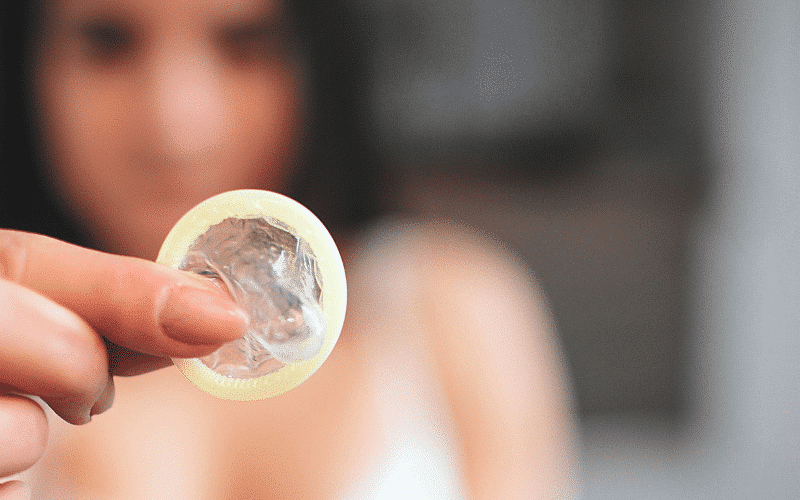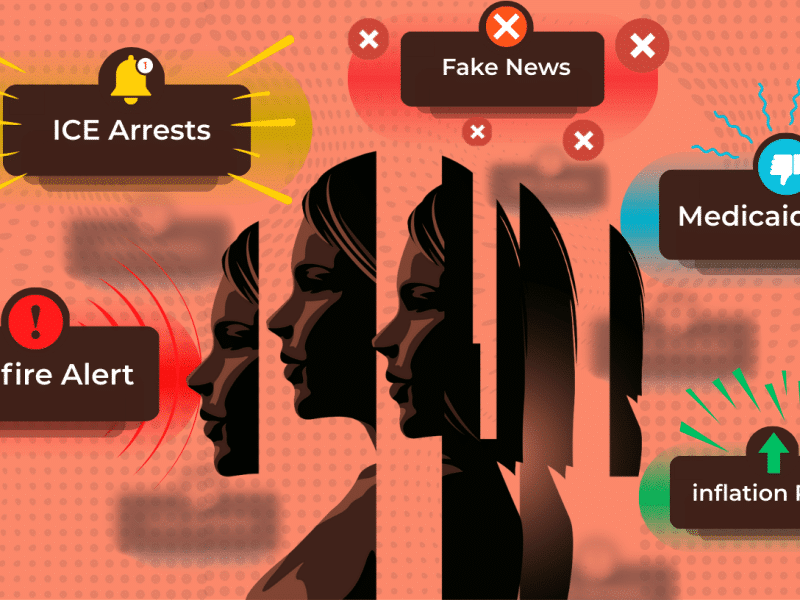Ignorance Isn’t Bliss: STD Rates Amongst Latinas Are Rising, But That Can Change
STD rates among Latinas are on the rise. From higher risks of HPV and HIV to impacts on newborns and young Latinas, the consequences are real and immediate. Ignoring this isn’t an option.

This reporting was produced in partnership with the Northeast Valley Health Corporation.
The Latino community is dealing with a mountain of healthcare issues and has been for a long time. Sexual health has been an ongoing issue of concern for the Latino population, especially Latinas, who have historically experienced high incidence rates related to STDs.
The Latino community is the largest community of color in the United States, with 62.1 million people, according to the last 2020 U.S. census. It comes as no surprise that Latinos’ quality of overall health, just like every community, is impacted by social determinants of health. This is the holistic understanding that health is impacted by the environments in which people live, directly affecting their access to health care, green spaces, healthy air and clean water, health and sex education, and quality living conditions.
We can see these disparities in our communities, which are reflected in our health statistics. For example, the study “HIV Susceptibility Among Hispanic Women in South Florida,” published in 2010, found that HIV/AIDS rates were 3.5 times higher for Latinos than for whites. The entire Latino community is at greater risk of contracting STDs, and Latinas are particularly impacted due to a lack of access to healthcare and sexual education, but also because of the stigmas surrounding sexual health.
Latino machista and marianista culture often adds an additional layer of stigma to women’s sexual behavior. One of the best ways to destigmatize sexual health within the Latino community is through education.
Contrary to what is often implied or taught, STDs are not only preventable, but they are also easily cured more often than not. Ignoring the reality of sexual prevention and health won’t make them go away, but taking charge of your sexual life will very likely keep them away.
What Are STDs?
Sexually transmitted diseases (STDs), also known as sexually transmitted infections (STIs), are infections that get passed from one person to another during sex. The terms are used interchangeably, but we’ll stick with “STDs” throughout for the sake of clarity. STDs are usually contracted during unprotected vaginal, anal, or even oral sex.
However, STDs can also be contracted through other kinds of contact involving the mouth, vagina, penis, or anus that doesn’t necessarily involve what one considers the “act of sex.” For example, that’s the case for infections such as herpes or Human Papillomavirus (HPV) because they spread through contact alone, which means any transfer of bodily fluids such as saliva can spread the infection.
It’s also possible to get STDs through sharing needles or blood transfusions. Some STDs can even be passed down to babies during pregnancy, at the moment of birth, or through breastfeeding. In fact, from 2016 to 2020, syphilis passed on to newborns increased by 235%.
The truth is that STDs are common, but they’re preventable. They’re also treatable, especially if caught early, which is where STD testing comes in. This is particularly important for Latinas because they have a much higher risk of contracting STDs. Sexually transmitted diseases are an epidemic in the Latino community, and most of the newly infected are female.
@psblossom What is an STD? 🤔 #sexualhealth #stdawareness #reproductivehealth
♬ Kolors – Monte Booker & Smino
Latinas at High Risk for STDs. Why?
One thing about STDs is that not all of them have symptoms. As a result, they often go unnoticed. This is precisely why regular STD testing is such an essential part of practicing sexual health.
Every sexually active person must prioritize regular testing, even if safe sex practices are followed. It’s the best way to protect yourself and your partner or partners against the risk of potential STDs.
The reality for Latinos is that regular STD testing is often easier said than done. Many factors contribute to that and pose obstacles, but there are also ways to overcome these obstacles.
@bocababesobgyn ♬ original sound – Boca Babes OBGYN
1. Lack of Accessibility to Healthcare
Unfortunately, many Latinos don’t have health insurance. According to the Office of Health Policy, Latinos are less likely than whites to get insurance through their job. In 2022, Statista reported that 21% of the Latino population didn’t have health insurance.
Medicaid expansions have benefited the community, but not all states have adopted them, including Texas, where 40.2% of the population is Latino, and at least 19.4% of them live below the poverty line. But other states, like California, did the opposite and have continuously expanded access to Medicaid. Anyone between the ages of 26 and 65 can access Medicaid regardless of immigration status and receive medical care at community health centers like Northeast Valley Health Corporation.
These community health centers also see patients regardless of income, which is a huge help. Affordability is often an issue, and many Latinos don’t know that their healthcare could be low-cost or even no-cost. Given that too many Latinas who are sexually active are without health insurance, options like these health centers could be easily discoverable with an internet search.
@phdfemininehealth Remember to get tested often and use protection (correctly!) 👍🏻 #phdfemininehealth #safesex #healthtips #doctortips #gynecology
♬ Holiday – FASSounds
3. Stigma Around STDs
The stigma around STDs runs deep in society, so it affects every community. However, the Latino community is disproportionately affected for other reasons discussed above. The same survey we’ve been discussing showed that fear of what people may think is another factor that keeps Latinas from getting tested. The stigma is often tied to a lack of education about STDs, the terminology used around them, and common misconceptions. It’s also often linked to religious beliefs, politics, and family dynamics.
@beyondmedcares Your status does not define you & it does not mean you’re dirty. Getting an #std is a expected risk if having #sex ! #stdawareness #stdcheck #knowyourstatus #sexualhealth #gettested #stiawareness #herpes #herpesadvocate #safesex #menshealth #womenshealth
♬ Roxanne – Instrumental – Califa Azul
For example, a lot of people don’t know that STDs are treatable and that most require very simple treatment, especially if they’re diagnosed early. When it comes to misconceptions, a lot of people believe promiscuity is the main factor. In truth, it only takes one sexual partner.
Marital status or being in a committed monogamous relationship also has nothing to do with it. Discovering an STD doesn’t necessarily mean someone cheated in the relationship. This could be due to a long-standing infection that was never diagnosed or was symptom-free.
It’s also possible for an STD treatment to fail, erasing the symptoms but not the infection itself. The point is that whether single, married, or in a committed relationship, regular STD testing should be part of maintaining good sexual health. Getting tested while married or in a relationship is just a part of proper health care.
The stigma around STDs is also tightly linked to the language. People who contract them are labeled as “dirty,” and people who don’t are considered “clean.” Not to mention the jokes people often make about “damaged goods” and other shaming insinuations.
If you’re feeling empowered about it, talk about safe sex, prevention, and testing in everyday regular conversations because it is, indeed, very normal. But if not, it’s helpful to know that getting access to preventative support like condoms and PrEP or STD testing and treatment is often a private click away.
Community health centers, like Northeast Valley Health Corporation, often allow easy scheduling right from the privacy of your computer or mobile screen. For example, Los Angeles County residents can easily make an appointment online, and no one has to know about it.
@selfmagazine Stop immediately if the condom breaks! #SexualHealth #CondomTips #HealthTok #LearnOnTikTok #TikTokPartner
♬ NOTHING – Westover
Latinas Can Take Charge of Their Health
While STDs affect individuals regardless of ethnicity or background, Latinas bear a disproportionate burden.
From HIV to chlamydia, gonorrhea, and syphilis, STDs present a significant public health challenge made worse by the silent nature of many infections, the lack of accessible testing and treatment options, the stigma and shame, and the misunderstanding of sexual health.
However, it’s important to note that STDs can be prevented and treated and that Latinas have the power to change the conversation around STDs in the Latino community. More and more research shows that Latinas are known influencers for their family, friends, and community. They can take charge and spread awareness about STDs, prioritize sexual health, as well as share information on resources like free STD testing.




